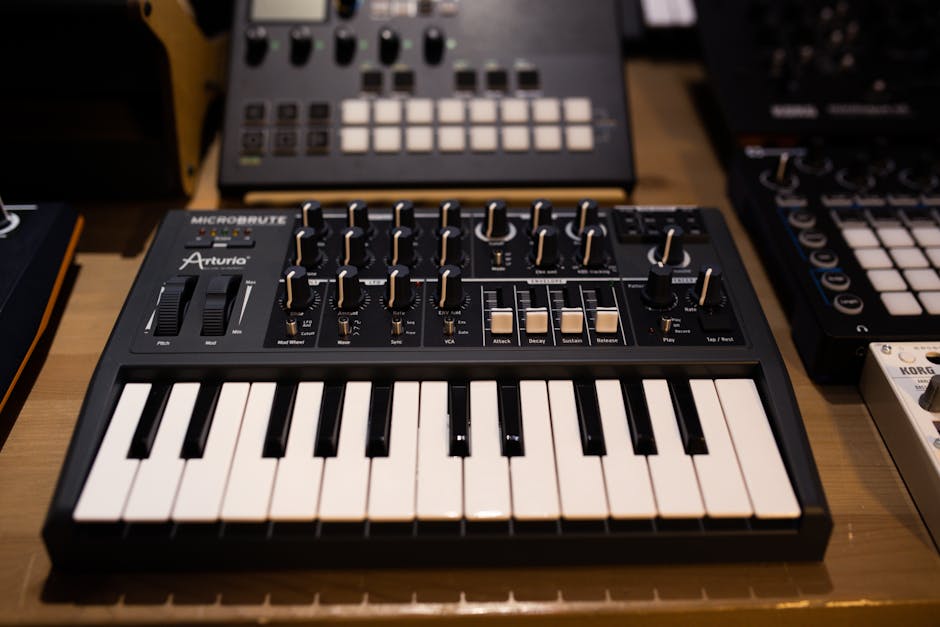Setting Up a Home Recording Studio on a Budget: Essential Gear You Need

Setting up a home recording studio can seem like a daunting task, especially when you're on a budget. With the right guidance and some strategic decisions, you can create a functional and high-quality recording space without breaking the bank. Whether you're an aspiring musician, a podcaster, or just someone who loves to experiment with sound, having a dedicated recording space at home can greatly enhance your creativity and productivity. This guide will walk you through the essential gear you need to get started, ensuring you make informed choices that balance cost and quality.
1. Choosing the Right Space
The first step in setting up your home recording studio is choosing the right space. Ideally, you'll want a room that is quiet and isolated from external noise as much as possible. A spare bedroom, basement, or attic can often be good choices. Consider the size of the room; smaller rooms can lead to issues with acoustics, such as standing waves and reflections. They can be managed with proper treatment. Larger rooms offer more flexibility but may require more investment in soundproofing and acoustic treatment.
Make sure the room has enough electrical outlets to support all your equipment. It's also worth considering the room's lighting and ventilation to ensure a comfortable working environment.
2. Essential Recording Gear
Once you've chosen your space, it's time to consider the essential gear you'll need. Here's a breakdown of the most crucial items:
- Computer: A reliable computer is the backbone of any home studio. Whether you prefer a desktop or a laptop, ensure it has enough processing power and RAM to handle your recording software.
- Digital Audio Workstation (DAW): Your DAW is the software you'll use to record, edit, and mix your music. Popular options include Ableton Live, Logic Pro X, and Pro Tools.
- Audio Interface: This device converts analog signals (like vocals and instruments) into digital signals that your computer can process. Look for interfaces from brands like Focusrite or PreSonus.
- Microphones: Invest in at least one good-quality condenser microphone for vocals and an instrument mic if needed. Brands like Shure and Audio-Technica offer excellent budget-friendly options.
- Headphones: Studio headphones are essential for monitoring your recordings accurately. Look for closed-back headphones from brands like Sennheiser or Audio-Technica.
3. Acoustic Treatment
Acoustic treatment is crucial for achieving a clean and professional sound in your recordings. It involves managing how sound behaves within your room to reduce unwanted reflections, echoes, and standing waves. You don't need to spend a fortune on acoustic treatment. Start with some basic items like foam panels or bass traps. Place these strategically around your room to target problem areas.
If you're on a tight budget, DIY solutions like heavy curtains or rugs can also help dampen sound reflections. The goal is to create a balanced listening environment where you can accurately hear what you're recording.
4. Monitoring Setup
A good monitoring setup is essential for mixing and mastering your recordings accurately. While headphones are useful for detailed listening, studio monitors provide a more accurate representation of your sound. When choosing studio monitors, consider factors like size, frequency response, and placement within your room. Brands like KRK Rokit and Yamaha offer reliable budget-friendly options.
Position your monitors at ear level and form an equilateral triangle with your listening position for optimal sound quality.
5. Software Plugins and Virtual Instruments
Your DAW will likely come with some built-in plugins, but investing in additional software can significantly enhance your recordings. Look for plugins that offer high-quality virtual instruments, effects, and processors. Popular plugin bundles from companies like Waves or Native Instruments provide excellent value for money. These bundles often include everything from EQs and compressors to reverbs and synths.
You can also find free plugins online that offer surprisingly good quality. Websites like Plugin Boutique often feature deals on popular plugins that can help you expand your toolkit without overspending.
6. Cables and Accessories
Cables might not be the most exciting part of setting up a studio, but they are essential for connecting all your gear together. Invest in good-quality XLR cables for microphones and TRS/TS cables for instruments and monitors. Cable management is also important to keep your workspace tidy and free from clutter. Velcro ties or cable organizers can help manage this effectively.
Other accessories you might need include mic stands, pop filters for vocals, and perhaps even a MIDI controller if you plan on using virtual instruments extensively.
| Item | Estimated Cost |
|---|---|
| Computer | $500 - $1500 |
| DAW Software | $100 - $500 |
| Audio Interface | $100 - $300 |
| Microphones | $100 - $300 each |
| Headphones | $50 - $200 |
7. Learning Resources
No matter how good your gear is, understanding how to use it effectively makes all the difference in producing professional-quality recordings. There are many resources available online to help you learn about recording techniques, mixing strategies, and mastering tips.
YouTube channels like Produce Like A Pro or websites such as Sound on Sound offer tutorials that cover everything from basic setups to advanced production techniques. Additionally, forums like Gearslutz provide platforms where you can ask questions and share experiences with other home studio enthusiasts.
So the answer is YES! Setting up a home recording studio on a budget is entirely feasible with careful planning and smart purchases.
